
Shrubs Around Las Vegas, Vegetation Around Las Vegas
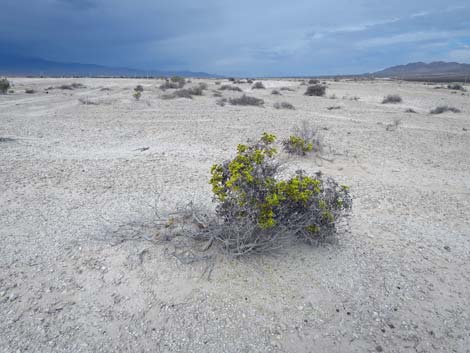 Las Vegas Buckwheat at Tule Springs National Monument |
General: Las Vegas Buckwheat (Eriogonum corymbosum) is an evergreen, low-growing shrub with upright, sparsely leafed stems and flower stalks that stand above the leafy parts of the plant. Yellow flowers form odd clusters on the stalks. The flower stalks persist after the flowers are gone. Leaves densely woolly. Las Vegas Buckwheat is a rare component of vegetation communities in the Lower Sonoran (Creosote-Bursage Flat) and Upper Sonoran (Mojave Desert Scrub) life zones. Two varieties are found in Nevada: E. c. nilesii and E. c. aureum, and two other varieties (E. c. glutinosum, E. c. orbiculatum) occur in southwest Utah and adjoining northwest Arizona. Eriogonum c. nilesii is a candidate for Endangered Species status. Family: Buckwheat (Polygonaceae). |
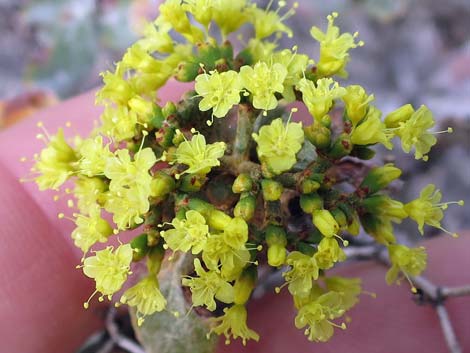 Fresh flowing stalk |
Plant Form: Upright, evergreen shrub with flower stalks and flowerheads that stand above the leafy parts of the plant. Height: Usually 3-4 feet tall; 5-feet across. Bark: Reddish to silvery. Stems: Upright, thin; with many small leaves. Leaves: Slightly oval, whitish below. Leaves and flowering branches densely tomentose. Flowers: Inflorescence: Cluster of flowers in a head on a stalk above the leafy parts of the plant. Flowers: tiny, numerous, yellow. Flowers August to November. |
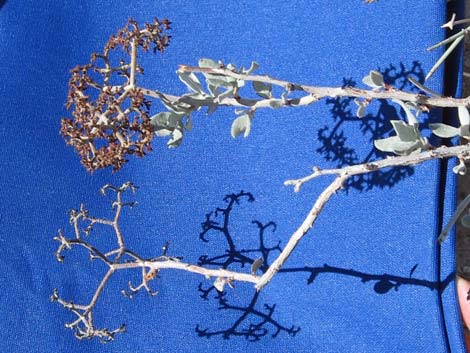 Old and older flowing stalks |
Seeds: Achene (like a tiny sunflower seed). Habitat: Dry, gypsum soils. Elevation: 3,000 to about 7,500 feet Distribution: Clark County, Nevada. E. c. nilesii is more or less found in the Las Vegas Valley, and E. c. aureum, is found in the Gold Butte region. Comments: The buckwheats are a very diverse family with some 50 genera and 1,100 species ranging from trees to annual forbs. Several species occur around Las Vegas. Fortunately, some of these species, including Las Vegas Buckwheat, are easy to recognize (at least to genus). Eriogonum corymbosum var. nilesii was elevated to candidate status under the Endangered Species Act on December 6, 2007. |
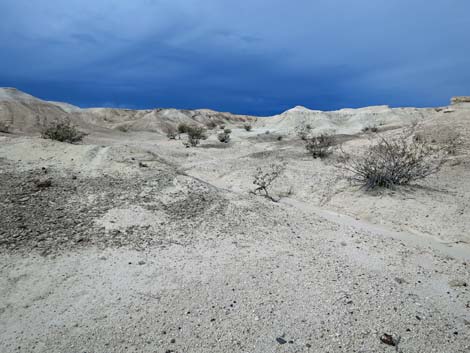 |
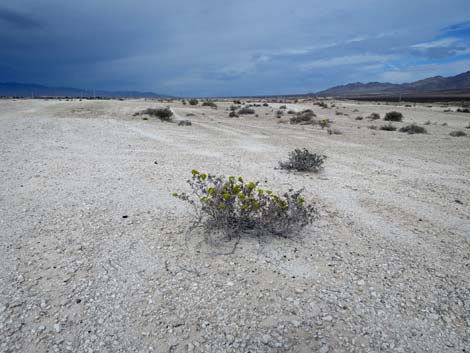 |
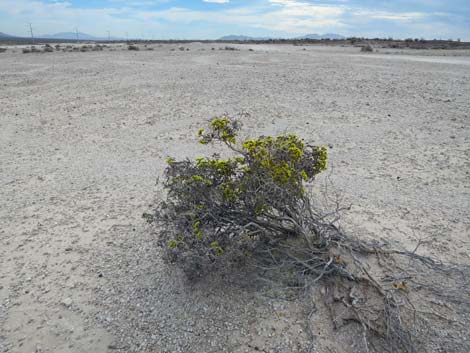 |
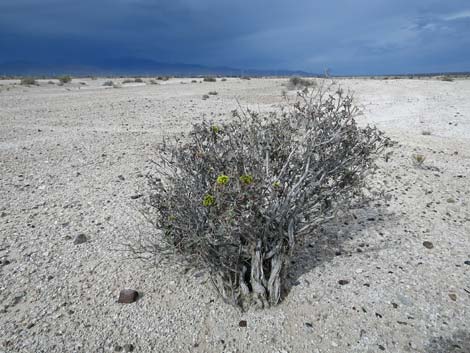 |
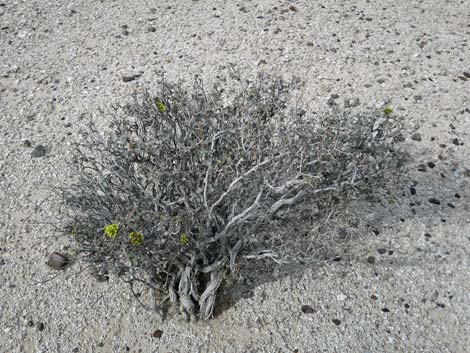 |
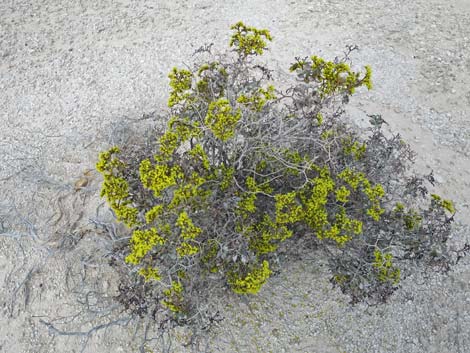 |
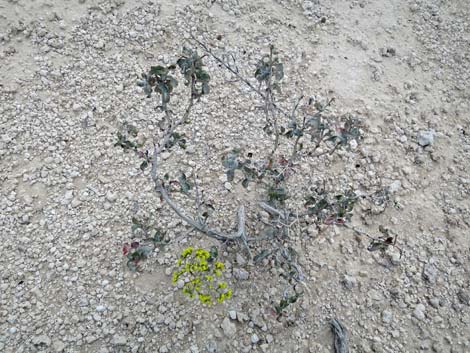 |
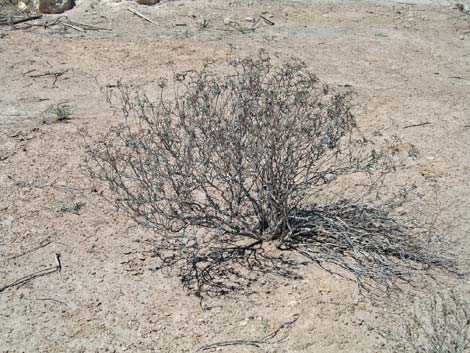 |
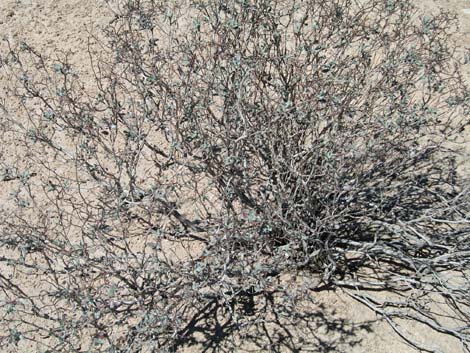 |
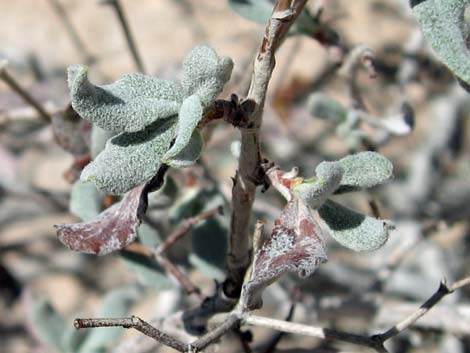 |
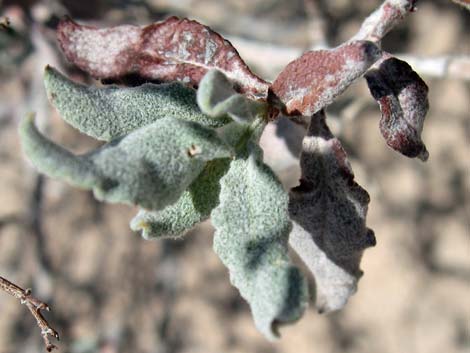 Leaves |
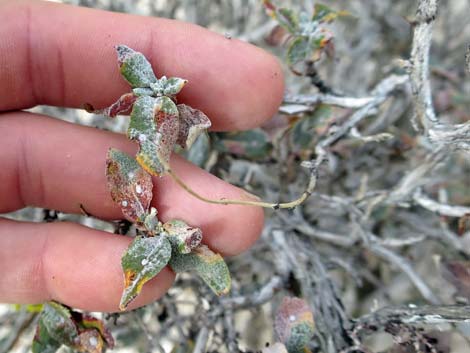 Leaves |
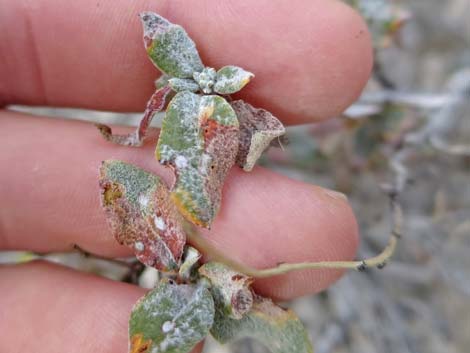 Leaves |
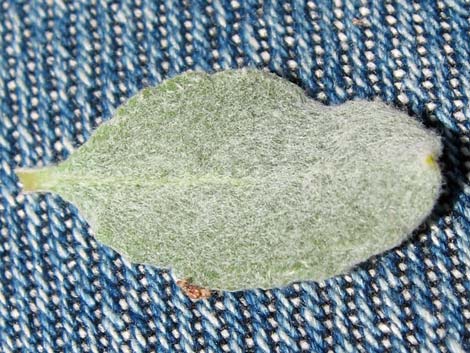 Upper leaf surface |
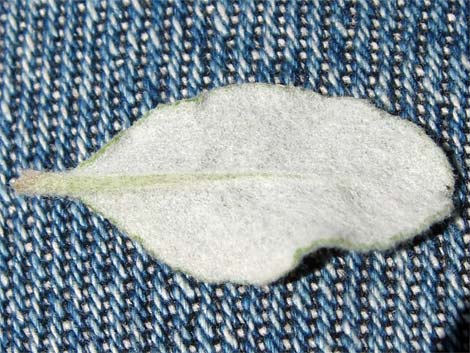 Lower leaf surface |
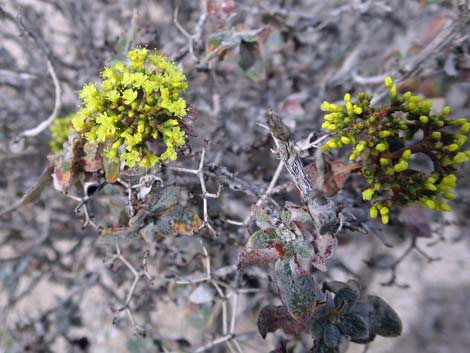 Flower clusters |
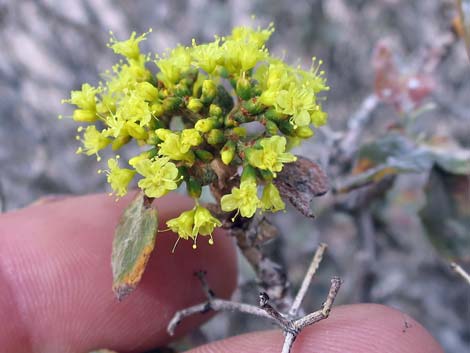 Flower cluster |
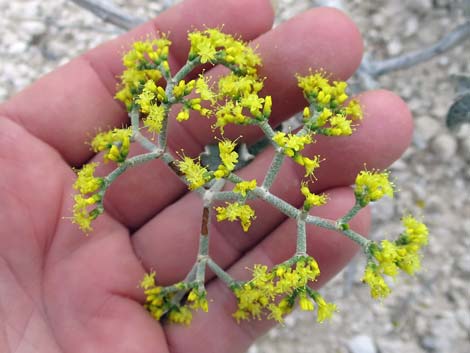 Flower cluster |
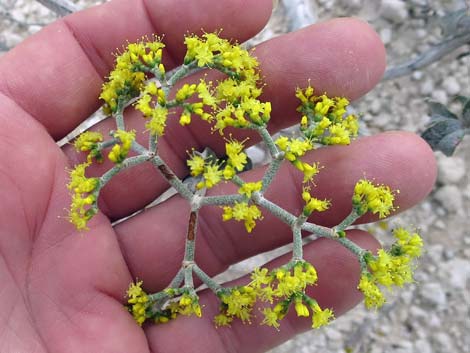 Flower cluster |
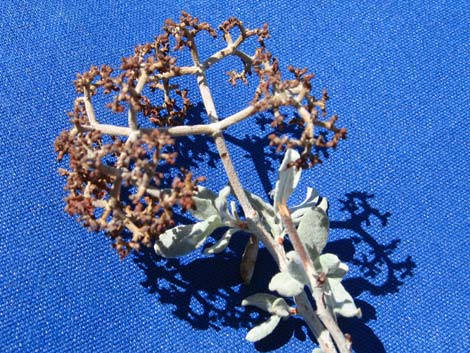 Old, dry flower cluster |
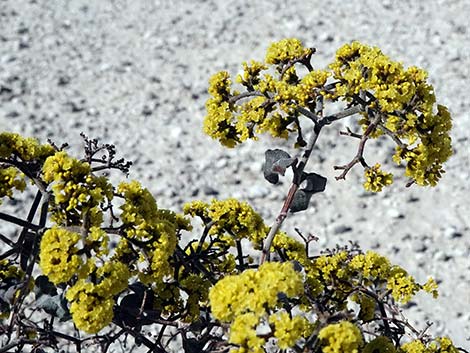 Flower cluster |
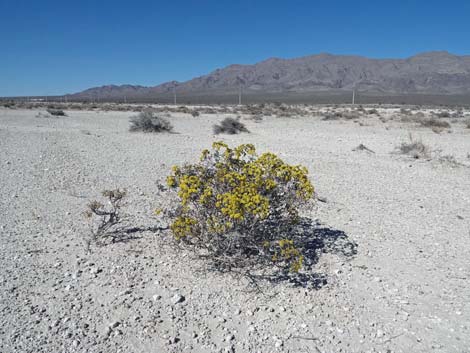 Typical habitat in Tule Springs Fossil Beds National Monument |
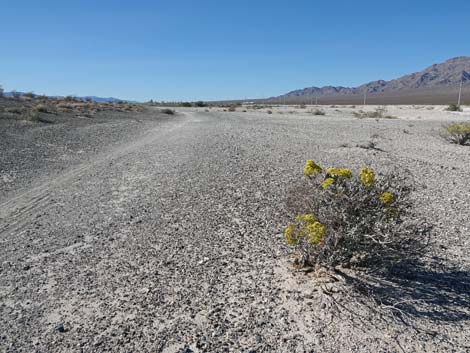 Typical habitat in Tule Springs Fossil Beds National Monument |
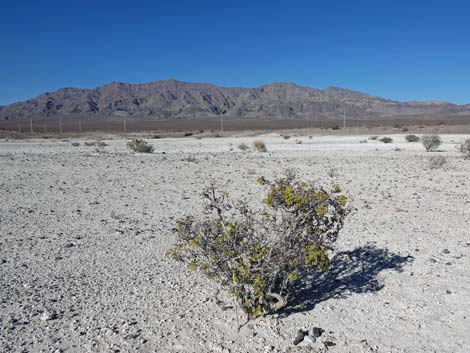 Typical habitat in Tule Springs Fossil Beds National Monument |
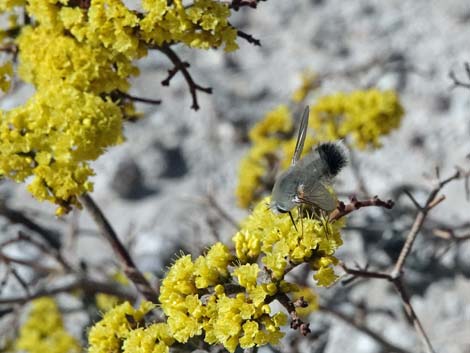 Fly with hairy black butt feeding on Las Vegas Buckwheat flowers |
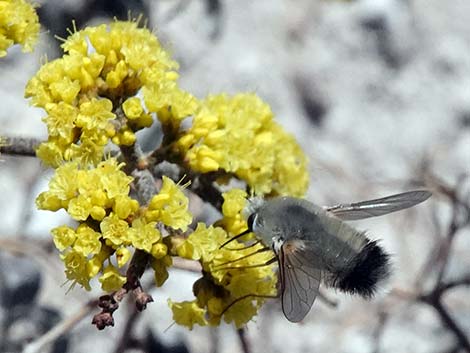 Fly with hairy black butt feeding on Las Vegas Buckwheat flowers |
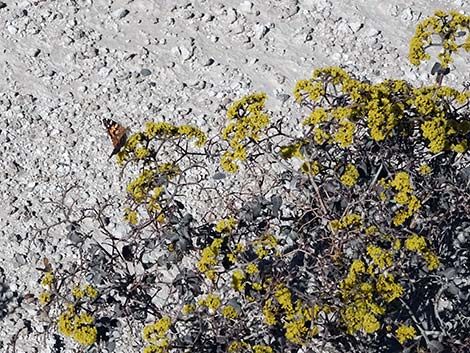 Painted Lady Butterfly on Las Vegas Buckwheat flowers |
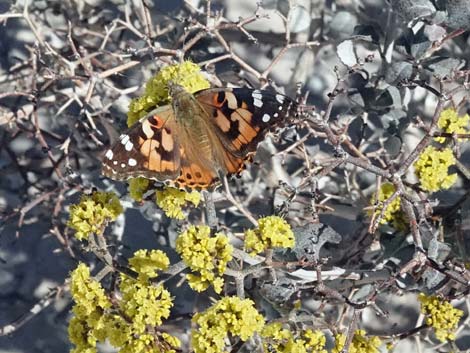 Painted Lady Butterfly on Las Vegas Buckwheat flowers |
Note: All distances, elevations, and other facts are approximate. Names generally follow the USDA database.
![]() ; Last updated 211126
; Last updated 211126
| All Shrubs | Plant Species Index | Glossary | Copyright, Conditions, Disclaimer | Home |